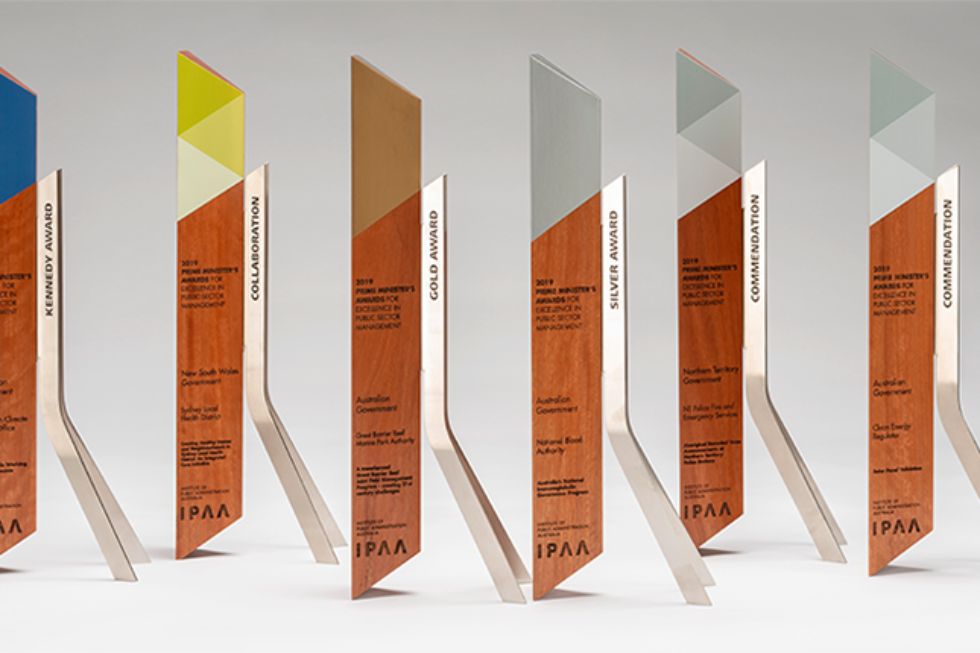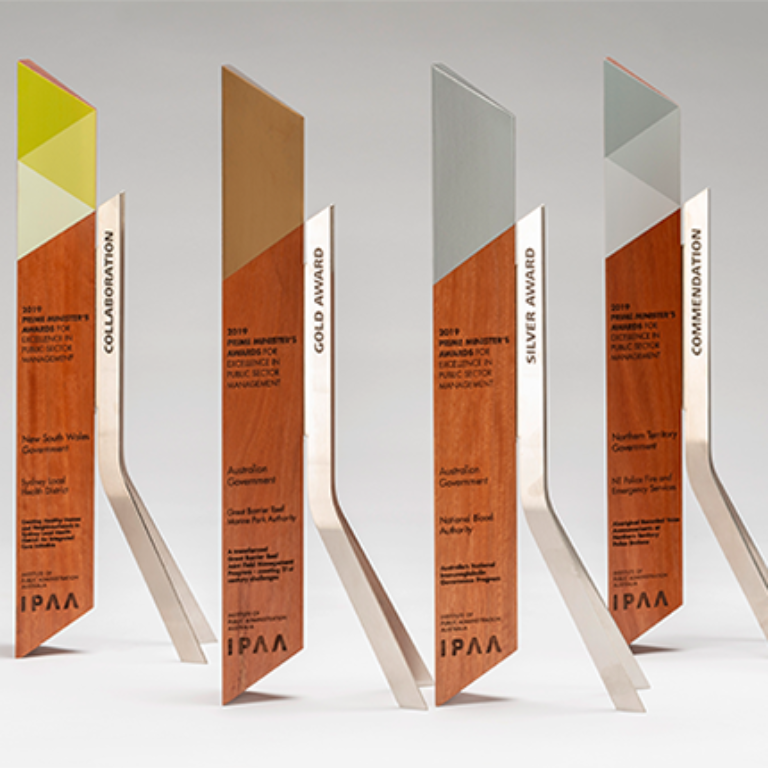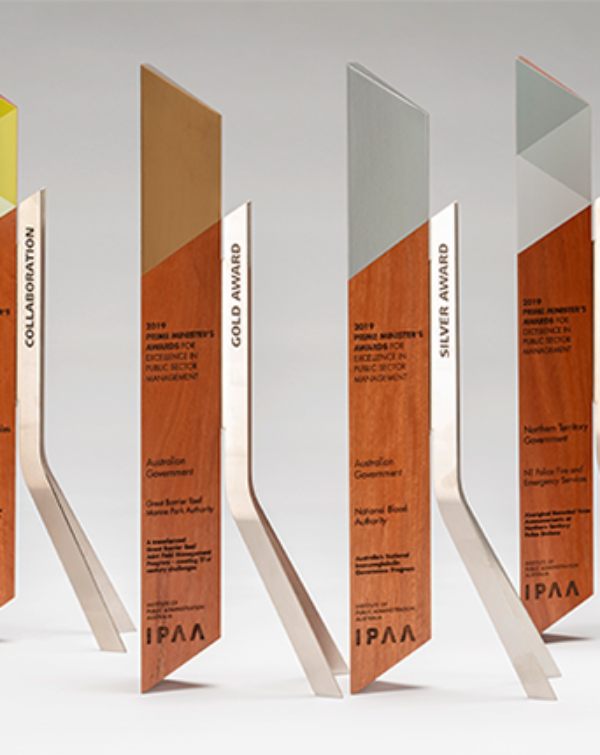“A pleasure to attend such an informative course with such a skilled, articulate, friendly, professional and engaging presenter. It surpassed my expectations.”
Sharon
Department for Environment & Water
This intensive course is designed to help public sector employees identify and apply key techniques in written communication. You will refresh yourself in your understanding of punctuation and grammar, to give you confidence in both your writing and proofreading abilities. If your job involves writing anything (for internal or external use) and you want to improve its power and its accuracy, then this is the course for you.
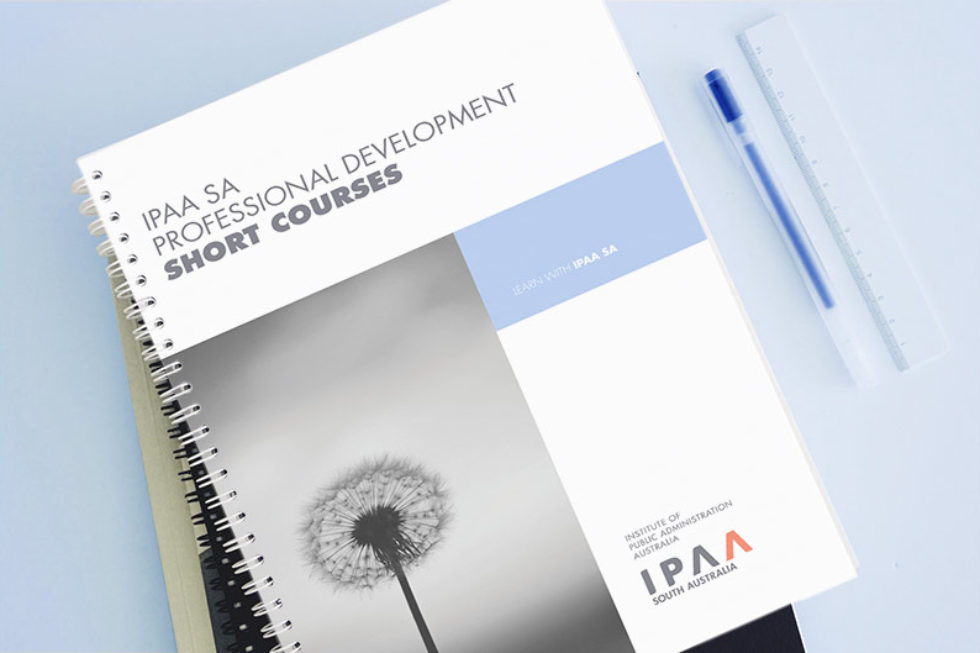
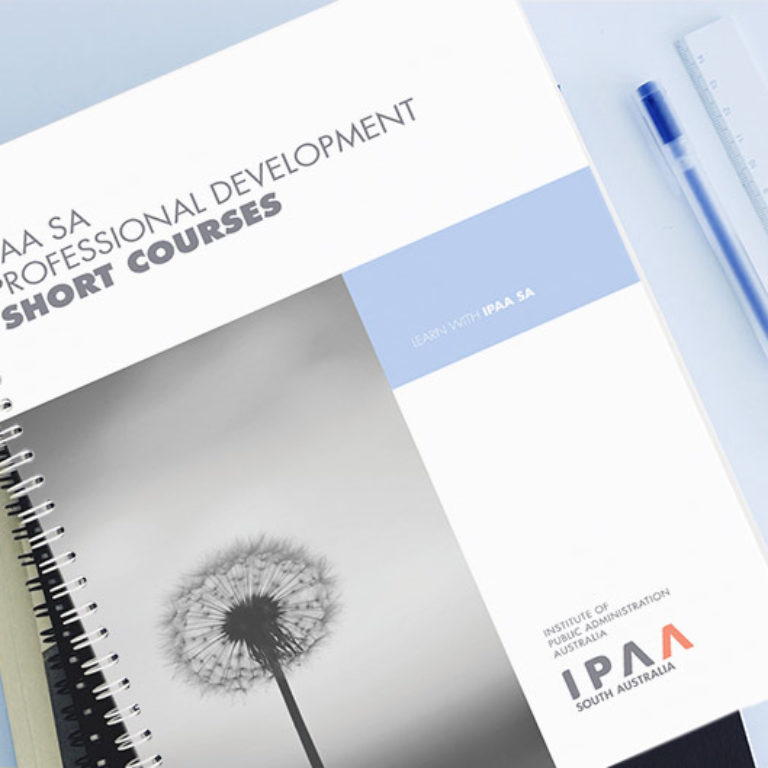
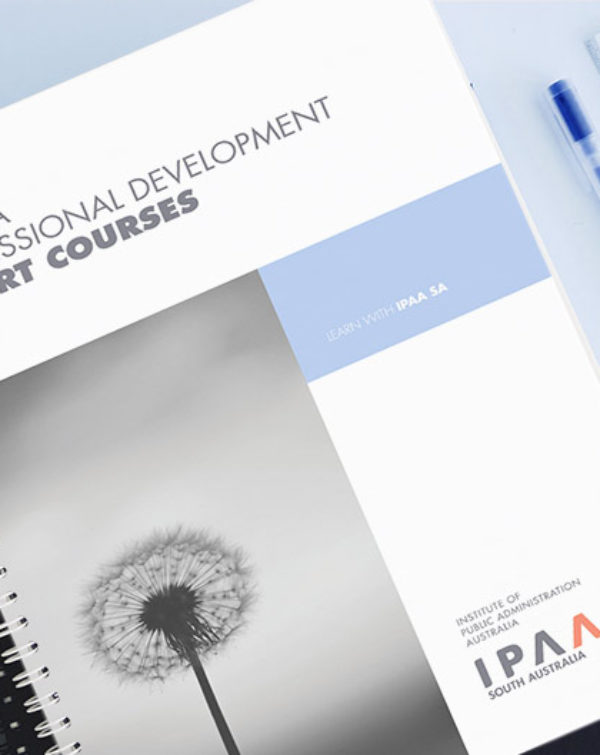
“A pleasure to attend such an informative course with such a skilled, articulate, friendly, professional and engaging presenter. It surpassed my expectations.”
Sharon
Department for Environment & Water
“I proof read every day so this course has really helped me sharpen my proof reading skills.”
Maddi
DCSI
“Brilliant presenter - engaging, dynamic and fun. No judgement and really pulled everyone into participating in a safe environment.”
Annon
“Nigel was very engaging and entertaining, while keeping on track with the course aims. He was able to draw the whole class in and get everyone involved, always asking for examples/issues from the participants, and providing/responding with his high level of skill, knowledge and guidance.”
Sharon
Department for Environment & Water
“Already I have noticed that I have a greater attention to detail. It feels like you go through mind training almost.”
Sue
SA Health
“Should be offered to all communications staff in agencies - I would highly recommend this course to my colleagues.”
Sharon
Department for Environment & Water
“The moment I got back to work I told my colleagues about how amazing this course was and the presenter.”
Zena
Dept for Education



“Engagement from the tutor was wonderful. He was very knowledgeable and allowed the class to ask questions at any point during the course.”
Alyssia
ASSIST therapy Services
Build your personal resilience and gain the tools to be able to bounce back from adversity and to learn from experience. Just like going to the gym, you can ‘train your resilience’ and enhance your personal ability to use it. This course will focus on helping you to access tools and strategies to further build your resilience and give you greater insight on areas for growth and development.



“The presenter provided multiple practical strategies for attendees to use. In addition, the handbook provides the capability for follow-up strategies.”
Sean
SA Police
“The presenters were engaging, knowledgeable and inclusive of everyone.”
Katie
Education Department
This exciting and interactive course will help you develop your career path and is designed to stimulate thought on where your career pathway may take you. Examining your career goals can be a stressful time, but this workshop will assist you in building a career plan to get you to where you want to be.



“Lecturer was fantastic. Absolutely awesome guy. Really enjoyed it because of his relevant examples etc”
Hailey
Country Health SA
“[When I return to work I will] Create a career plan in alignment with my interests and market capabilities/projections.”
Jo
“[When I return to work I will] Keep better informed on news to identify relevant trends etc.”
Chris
DHW
formerly Negotiation Plus
Develop your negotiation skills and learn how you can reach ‘win-win’ outcomes in negotiation scenarios. You will gain the core framework and tools to prepare and execute an effective negotiation strategy, in order to arrive at a beneficial outcome.



“[Since returning to work I] Have identified a number of differences between engagement, consultation and negotiation. Will ensure I am well prepared (War Room meetings with my team), build a relationship prior to negotiating, build trust and ensure we reach a compromise for mutual gain.”
-
Known as the ‘Hawthorne effect,’ as soon as something is measured, its performance improves; the challenge, however, is working out what to measure and when. This course will explore the many types and levels of performance measures so that you can focus on the activities that really count.






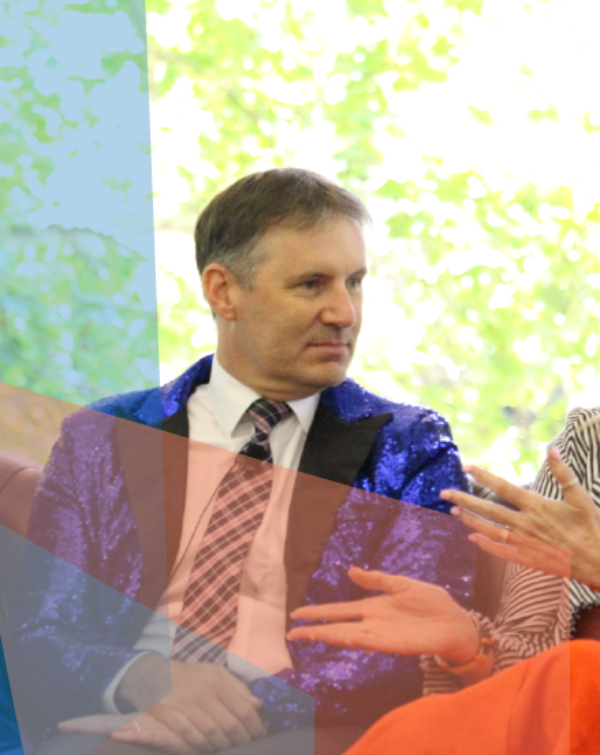
Satya Nadella is a man who has reached the absolute peak of his profession. At just 52 years of age he has been the CEO of global tech giant Microsoft Corporation for almost 6 years.
On 21 November Satya Nadella joined David Thodey AO in a wide-ranging conversation on Ngunnawal Country in the Great Hall at Parliament House in Canberra. He spoke with an audience of Australia’s most senior leaders from the Australian Public Service, the ACT Public Service, professional service networks and tech firms.
The IPAA ACT luncheon was hosted by Renée Leon PSM, Secretary of the Department of Human Services, representing IPAA ACT President and the Secretary of the Treasury, Dr Stephen Kennedy PSM, who was travelling interstate with the Treasurer.
Despite the extraordinary success Microsoft has achieved under Satya Nadella’s leadership — a fourfold rise in its stock price being but one KPI — it is clear from his energy, passion and moral compass that his ambition for Microsoft, and the role it can play for the good of society, is unconstrained:
— The sense of purpose and mission of Microsoft under Satya? To empower every person and organisation on the planet to achieve more.
— Its mindset? One of growth.
— Its culture? One which seeks to ‘learn it all’ rather than to ‘know it all’.
Satya reflected on an important lesson he learned while playing for his high school cricket team.
He had just finished a spell of off-spin — ‘bowling some real trash’ — and was replaced by his captain who brought himself on to get a breakthrough.
What surprised Satya was that as soon as the wicket had been taken, his captain threw him back the ball. Satya went on to get some of the best returns in his life.
It was a lesson he has given a lot of thought to.
Some years later he had the chance to ask his former captain, ‘Why did you bring me back on?’. His answer? ‘I needed you for the season’.
‘Here is a high school captain that is thinking about all the people on the team and… figuring out that there is such a thing as “confidence” and how to build it up in the team… you know, take the risk… it’s a pretty interesting thing…’.
This lesson has informed his personal leadership style. He explained the three qualities of leadership that he uses as a mirror:
‘One of things that I think leaders innately do is… they come into situations that are ambiguous, uncertain, and bring clarity.
…Bringing clarity is a super important quality, where none exists, of leaders.
And another attribute is leaders innately bring energy — when you need a leader you know this, they’re infectious.
Sometimes you say, “Oh, my team, my department is great, everybody else sucks”. That’s not, again, leadership.
It’s about creating energy all around you, not just within your immediate vicinity. That’s another metric/measure/quality that I hold myself responsible for.
The last one perhaps is the defining attribute because leaders are people who have the capability of taking what is essentially an over-constrained problem and figuring a path through it… and how to solve hard problems when the solutions are not obvious…
Clarity, energy… and being able to deliver success are a good way… [to] hold yourself accountable as a leader.’
The Australian Public Service employs around the same number of people as the Microsoft Corporation, over 140,000 people. Satya was asked what any large organisation could do to change, adapt, renew and reinvent itself.
‘Long-term systemic change is hard…
It comes from being deliberate about how you bring about change: change that accommodates for what is a changing society and changing needs and — in our case — I’ve thought about it at three levels…
The first thing is the case for change is always made because there are new concepts… Ultimately it doesn’t happen in a vacuum, it happens because there is a new need, there is a new concept that is virtuous in its inherent quality.
Now the interesting thing is, the new concept comes with the foundational challenges: you need new capability.
…It’ll require two departments to build a better collaborative culture — like data, how data is shared across the departments to serve citizens more effectively.
…So, there’s new inherent capability that needs to be built, in order to go after this new concept, but here is the foundational challenge… What allows you to build that capability, that gives you even the ability to go after the new concept? It’s culture.
Unless you have a foundational cultural meme inside the system that allows you to build these capabilities long before they’re conventional wisdom, you’re never going to be able to keep up with times and that I think is the hard challenge…
From Ancient Greece to modern Silicon Valley the one thing that has brought civilisations and companies down is hubris.
It all comes down to “How do you have a culture that doesn’t propose that you know it all but you are positioned to learn it all?”.
…A growth mindset, confronting your set mindset… [is the meme] we adopted as our cultural foundation.
…It’s a hard thing… it’s about having the courage to confront your own fixed mindset…
Change and culture — where you have that learning posture — is probably the ultimate challenge in bringing about that systemic change, because that’s what’ll allow you to build capability long before you need it; that formula will really allow you to go after new concepts which are going to have a huge impact.’
Australia’s National Disability Insurance Scheme is progressively rolling out tailored support packages to meet the individual needs of an estimated 460,000 Australians under 65 years of age with a permanent and significant disability. David Thodey described it as ‘one of the most ambitious programs going on in the world’.
The issue of supporting those with a disability is one that the United States Government has also addressed through the Americans with Disabilities Act. It is a highly personal issue for Satya and his wife Anu: their eldest son Zain, now 23, was born with severe cerebral palsy having suffered asphyxiation in utero.
Satya’s enthusiasm for new breakthrough technologies that Microsoft is leading to assist those with disabilities was palpable:
‘…If you take the raw capability of something like Eye Gaze — in Windows we just built in this technology where you can now touch-type effectively with your gaze.
So, if you have say, ALS [Amyotrophic Lateral Sclerosis, also known as motor neurone disease] and you want to communicate, you can with just your gaze’s input — it’s a breakthrough.
Now if you’re a middle school kid who has dyslexia… with machine learning and comprehension technology — in Word, in Edge, in OneNote — you have the ability as the dyslexic person to be able to read because you can change font sizes, the spacing: that kind of personalises it.
So, if you can change education outcomes for middle school children, you change their economic opportunity long-term.
Those are the types… if you are visually impaired you can interpret the world with computer vision.
These are absolutely breakthrough technologies that are going to get more people to be included in our society and find economic opportunity in civil service, in public/private sector, and so we want to take advantage of that but we also need to be completely grounded in the unintended consequences of all these computer technology breakthroughs as well.’
Satya was also emphatic on the need to drive inclusion in the workplace: ‘Every manager, every leader, needs to show up every day and demonstrate inclusiveness.’
In answer to a question from the floor put by Narelle Luchetti — Head of Digital Economy and Technology Division of the Department of Industry, Innovation and Science — on making workplaces more inclusive through technology, Satya said that the best way to design for inclusion was for organisations to have diversity of employees. The pressure for technology companies to provide assistive technology had rightly come from policy makers setting the bar high: Microsoft used to tick the box for accessibility; now he is seeing inclusiveness leading a renaissance at Microsoft in universal design.
Collaboration on new forms of data capture and analysis — through drone and AI capabilities combined with the traditional ecological knowledge of Indigenous Australians — was showcased in the screening of the video Preserving Kakadu National Park which describes an innovative partnership between Microsoft, CSIRO and the traditional owners to identify and manage the invasive environmental weeds threatening the habitat of Magpie Geese and other native species at Ubirr within Kakadu National Park.
Deborah Anton — Interim Data Commissioner, Department of the Prime Minister and Cabinet — also quizzed Satya on his thoughts about how doing more with data can engender public trust and particularly in finding a balance between taking opportunities and pushing too hard.
In answer, Satya flagged that the 4th Industrial Revolution is all about data and its dividend, begging the policy questions:
— How is this dividend distributed?
— What is the value exchange?
In the public sphere the responsibility on government, and the dividend required from its use of citizens data, may be the delivery of better services.
Satya also described two tech business models: those built around platforms — such as Microsoft’s Azure — and those who built around trade in data, the aggregators. The natural governor of data aggregators as he saw it was citizen data rights.
He also touched on the new frontier of AI ethics, arguing forcibly that society should not abdicate control over this technology.
‘Let’s make a design decision that we’re going to have AI that augments human capability… and that’s a policy decision you can say…
In fact, I sort of say “today already we have algorithms out there in the world, that are somehow hijacking our attention”. In fact, if anything, I want to use the latest and greatest AI breakthroughs to put back my own attention in my control.’
From a Microsoft perspective, as a ‘productivity company’, Satya described how they had developed a set of principles, to help the engineering practices of AI, and of values — fairness, robustness, privacy and security, transparency, accountability and so on — upon which their principles were based.
Ultimately, in addressing this fundamental ethical issue, Satya argued that having diversity amongst the engineers, designers, product managers building a product meant that it would be ‘more representative of what the world needs because all their multiple interests will be brought to bear’.
Two questions from the floor triggered an expansive response from Satya.
Dr Steph McLennan, an IPAA Future Leader and Antarctic Geoscientist with Geoscience Australia, asked Satya to share a key aspect from Microsoft’s transformation that could be employed by any public sector organisation.
Satya described how he saw Microsoft’s job as being to meet the unmet and unarticulated needs of its customers. He suggested that government ask itself what institutional mechanisms it could put in place where its expertise — from across government — could be brought to bear to solve some of the most pressing challenges.
And Tom Hogan — another IPAA Future Leader and analyst with Treasury — asked Satya for his insights on how the public sector could more effectively tap expertise from outside the sector to help drive change and solve complex problems.
Satya observed that the need to focus public sector resources and to use them in the most effective manner, was really about investing in human capital: ‘no amount of exogenous expertise that can make up for the lack of capability inside’.
Satya argued that government needs to determine its core, inherent expertise that is then ‘being refreshed, augmented and upskilled’ — investment that will ‘attract people and bring in the expertise needed’.
The time of the CEO of the Microsoft Corporation is extraordinarily precious but sadly not boundless.
In closing the conversation David Thodey AO gave Satya his heartfelt personal thanks before handing back to Renée Leon PSM to deliver a formal vote of thanks on behalf of everyone in attending.
Satya Nadella delivered much for Australia’s senior public sector community to think on with an unquenchable optimism, intellect and passion.
Of the many insights Satya shared there was perhaps one that may be as enticing as that image of Magpie Geese in flight above the jewel-like wetlands and fantastically weathered rocky outcrops of Ubirr: ‘boundary-less capability’.
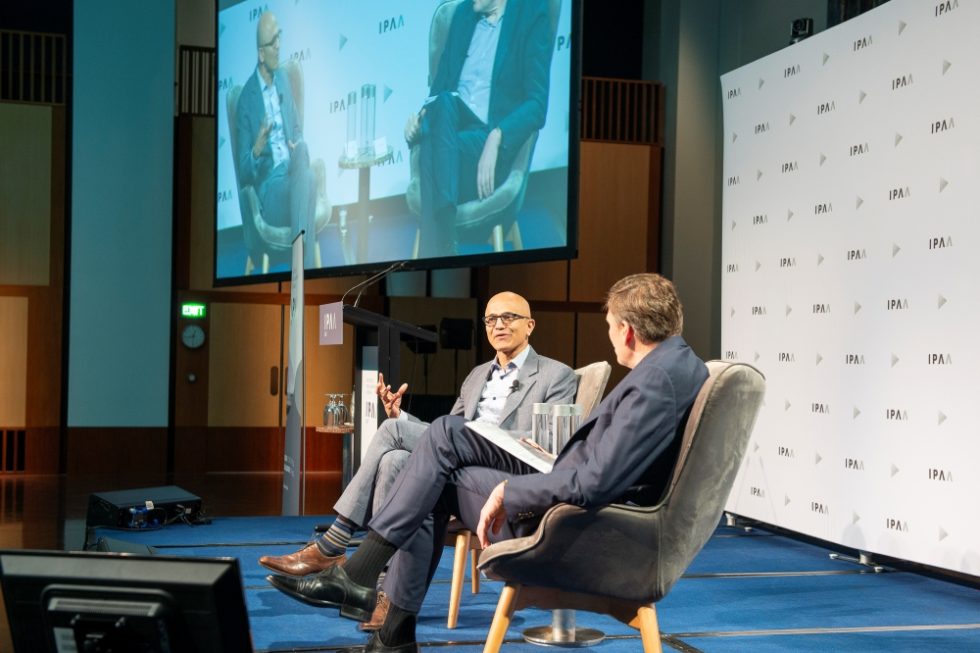
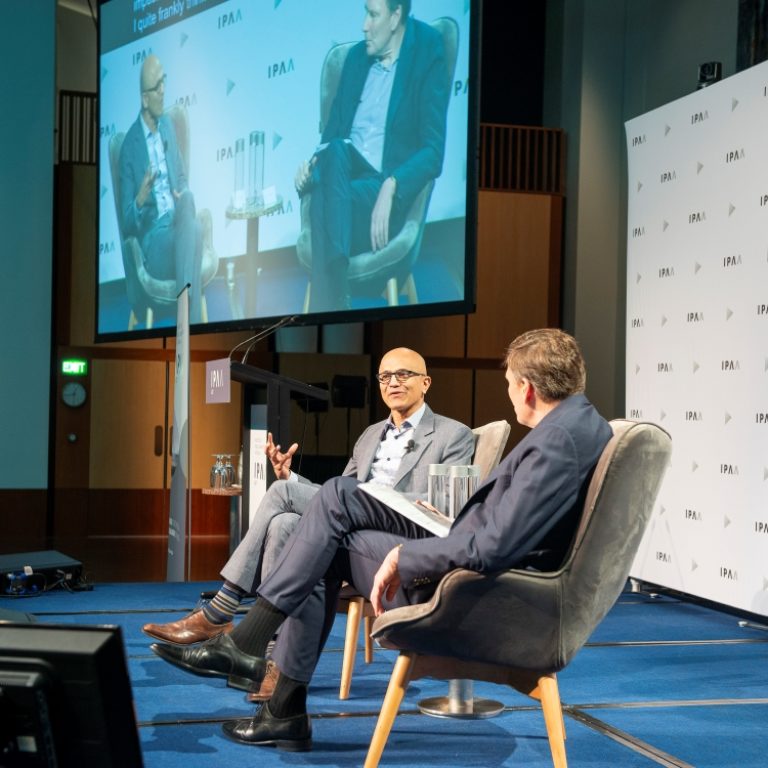
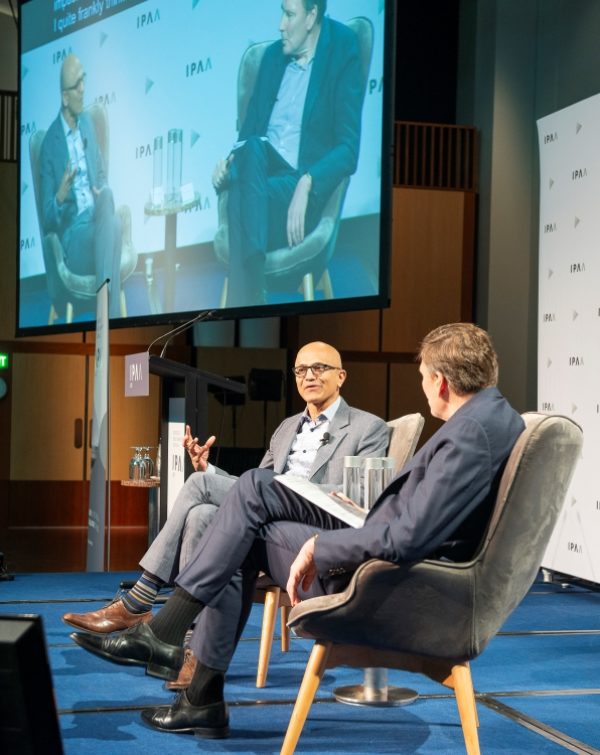
The Prime Minister’s Awards for Excellence in Public Sector Management were announced by the Hon Ben Morton MP, Assistant Minister to the Prime Minister and Cabinet, at a ceremony held on 13 November 2019 at Parliament House in Canberra.
Dr Stephen Kennedy PSM, IPAA ACT President and Secretary of The Treasury, hosted the ceremony and welcomed an audience of about 180 public sector leaders from across Australia and from all levels of government.
Visit the IPAA ACT website to learn more about the winners of each category.
